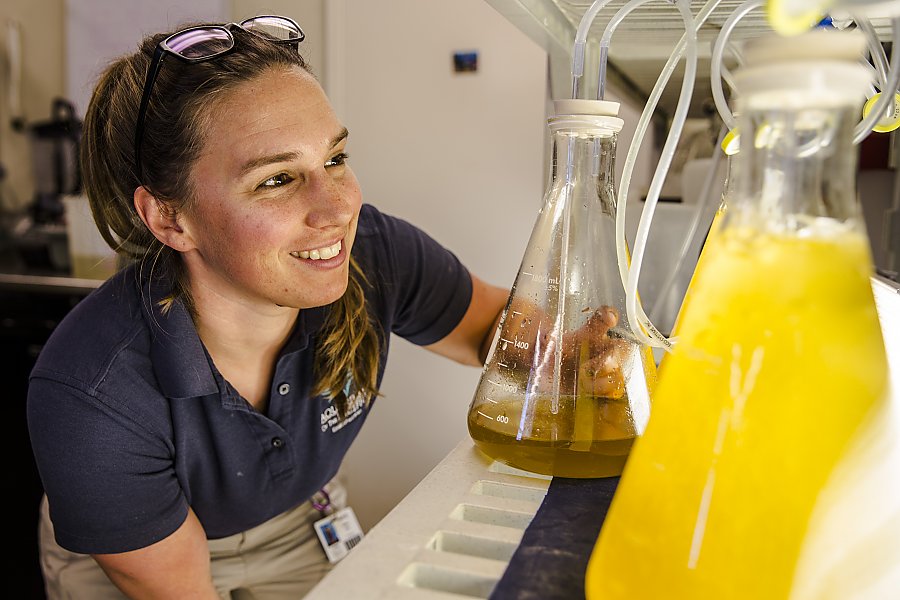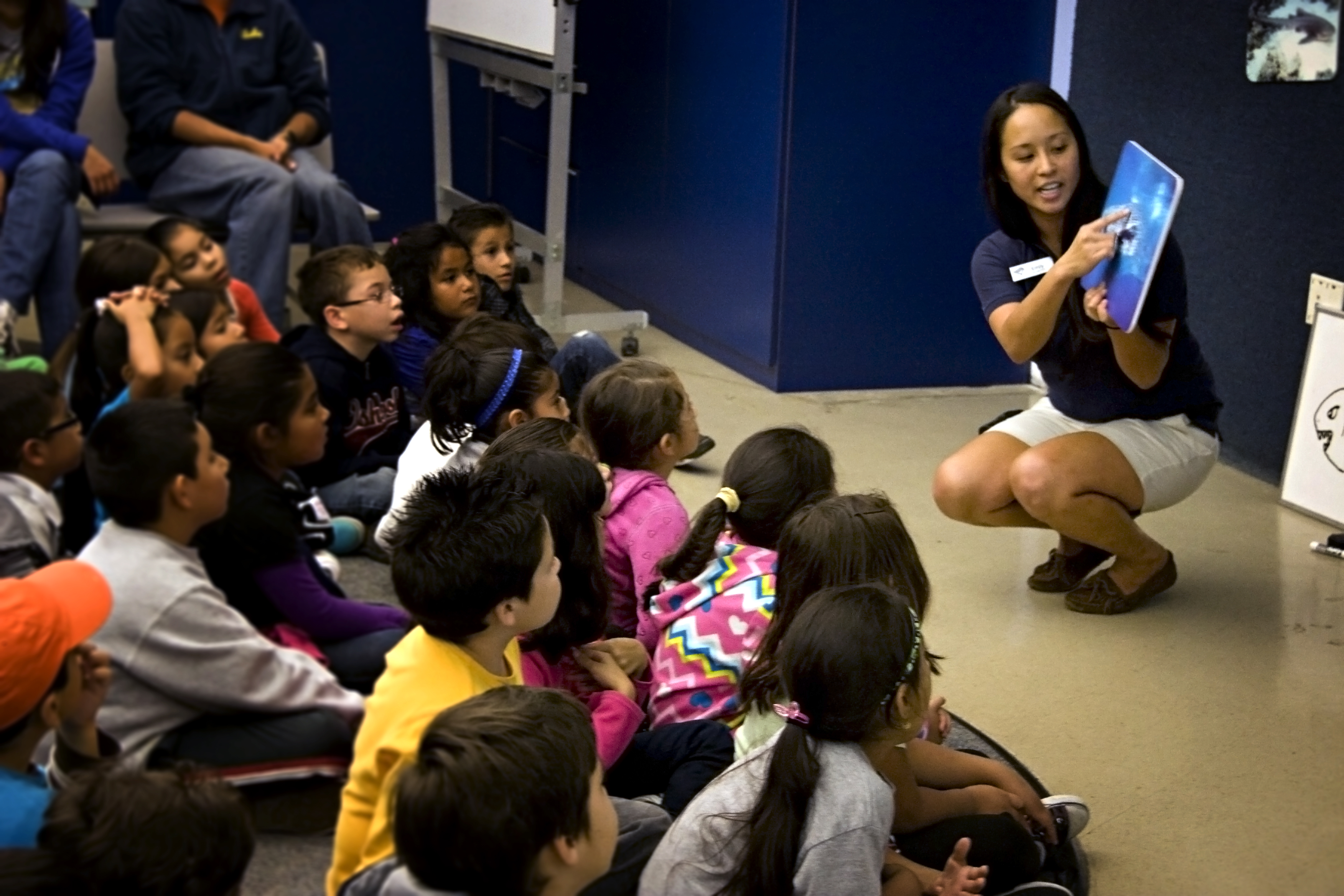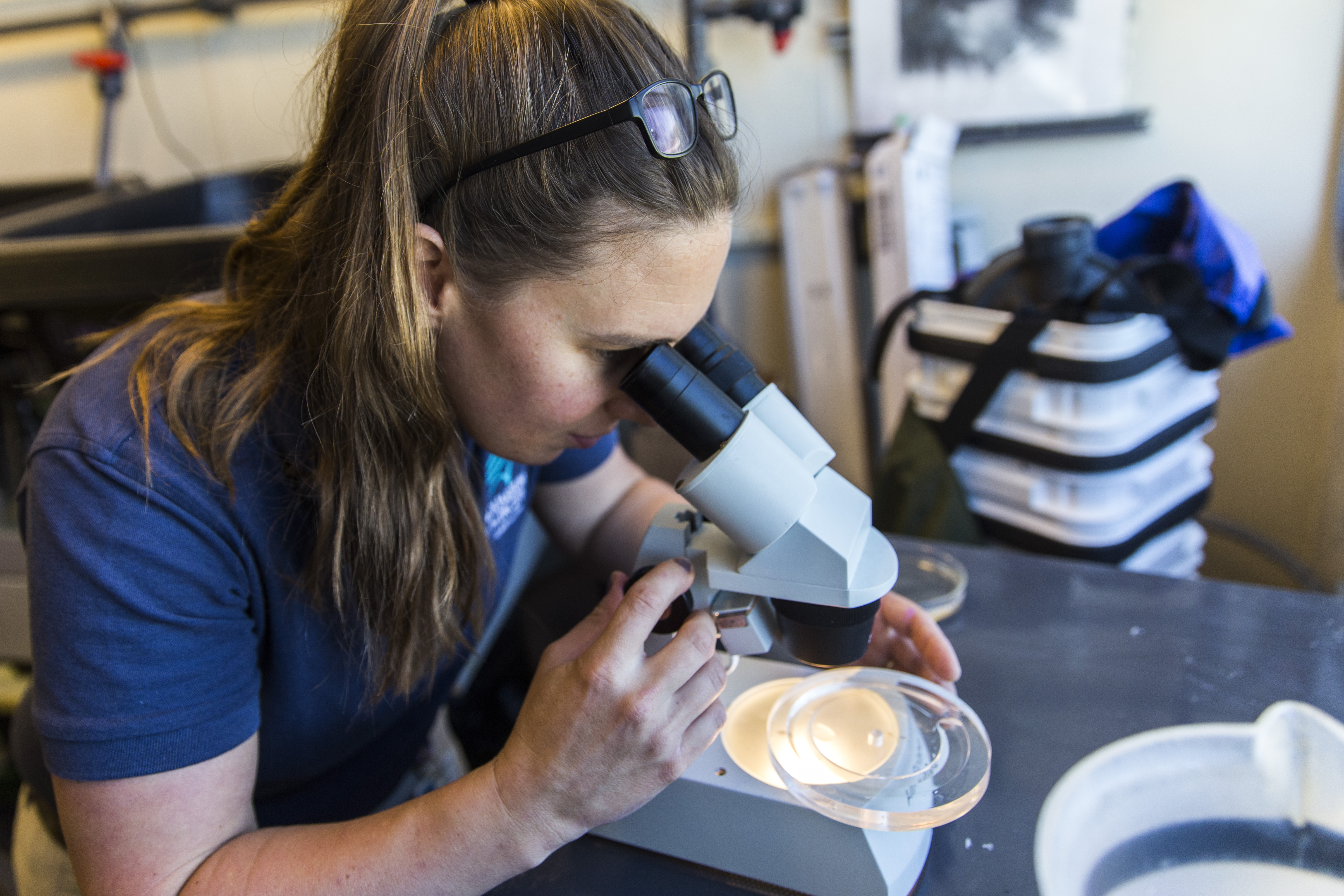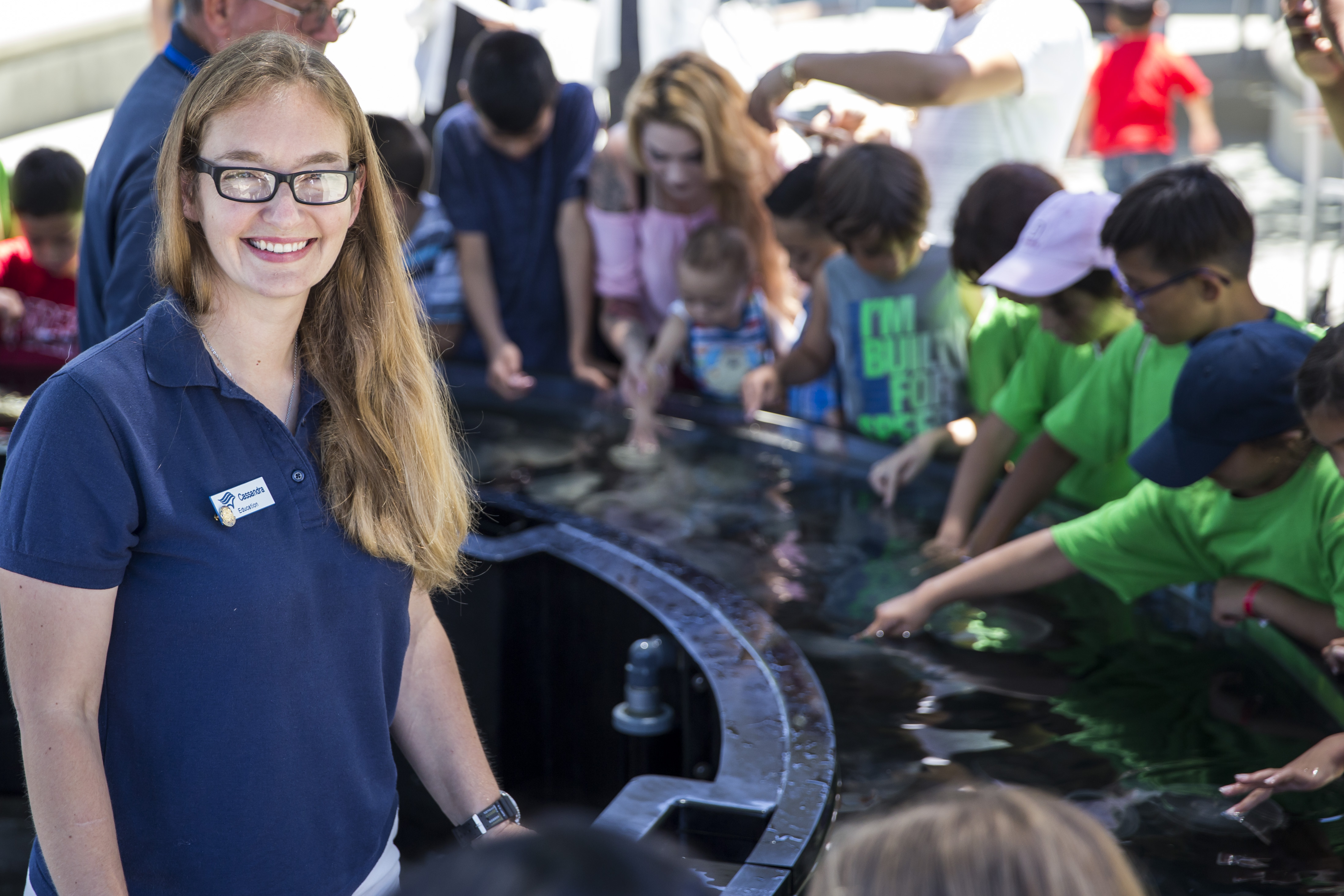Aquarium Women in STEM (Part 2)

In Focus
Wednesday, July 05, 2017
Today we’re highlighting three more smart and talented women in the second installment of Aquarium Women in STEM (science, technology, engineering, and mathematics). Read part one here and then continue on below to learn how our female staff members incorporate STEM into their daily work.

Emily Yam
Science Interpretation Manager
STEM as a Kid
When I was in elementary school, I got obsessed with the idea of what would happen to cheese if it was in boiling water. Since my dad was a scientist himself, he challenged me to think of a few hypotheses. I have this distinct memory of being on a step stool and dropping a piece of American cheese into a pot of boiling water. Of course, it just melted into an oily mess, but it was a great way to learn the scientific process. Ever since then, I knew I would go down a scientific career path.
STEM Language with Girls
Kids learn a lot about STEM even before they start going to school. Much of that learning comes from experiences they’ve had visiting cultural organizations, like the Aquarium, with their parents. There’s even research that tells us that parents are more likely to explain science to boys than to girls when they interact with exhibits. If you want to inspire a young girl to love STEM, I encourage you to use “wonder language:” ask her questions about the things she notices about the animals here at the Aquarium.
STEM in Everyday Work
My main job here at the Aquarium is to help our visitors understand ocean science through words, media, and different technological platforms. I spend a lot of time training our staff to explain complex ocean science concepts with simpler yet very specific vocabulary. That said, I am mainly working with science and technology, but math and engineering sometimes find their way into my days, whether it’s looking through spreadsheets, poring over data, or working with teachers to build a remotely operated vehicle (ROV).

Ashley Kidd
Aquarist, Live Foods
STEM Career Highlight
When I was working at the Pittsburgh Zoo & PPG Aquarium, collaborators from local universities and co-workers from different departments joined together to develop a project that would engage children with STEM activities. We created ReefBot, which was an underwater ROV (Remotely Operated Vehicle) that kids could maneuver through the “Open ocean” exhibit and take pictures of the marine life for research purposes. It was a great way to teach them how scientists gather data and to introduce them to different careers that can be applied to study the underwater world, whether as an engineer, marine biologist or software developer.
STEM in Everyday Work
Culturing live foods for our animals is mainly founded in biology, but a small amount of math and technology also comes into play. For instance, copepods will produce eggs as long as there is a low population density so I’m constantly taking that into account. I also have to make sure they are getting the right amount of food so algae density is measured on a daily basis too. It’s about keeping the ratios in check so that there is balance in the live culture system.
Female STEM Mentor
My high school biology teacher was a true inspiration. She was passionate about science and truly went above and beyond in her efforts to teach us. Not only was she an enthusiastic teacher, but she also worked in a lab that went on to win a Nobel Prize. We’re still in touch to this day and she continues to be a positive influence on my STEM-based career.

Cassandra Davis
Education Volunteer Coordinator
STEM in Everyday Work
Being in charge of the education volunteers, my job is to train them to be our primary on-the-floor communicators of science information. I provide them with science education so that they can address questions about ocean science, climate change, and current ocean wildlife events. I’m also highly involved with our citizen science programs and am in charge of our sea turtle monitoring program. My days are filled with marine science and technology, but I also use math for statistical work and engineering to construct outreach materials.
Female STEM Mentors
Sylvia Earle, of course, was a huge inspiration for me and most women (and men) who are interested in ocean research. I also have been inspired by Rachel Carson, an ecologist and author who wrote Silent Spring and many other books that inspired the contemporary environmental movement that led to the foundation of the United States Environmental Protection Agency in 1970.
STEM Career Advice
As a young girl, I loved all subjects, but I was a voracious reader. Even though I had a major interest in science, I was pointed down a liberal arts path because of my love of literature. I enjoyed working in the arts, but I eventually found myself getting a master’s of science degree and working in ocean science here at the Aquarium. If you are a young girl with a talent for writing, I encourage you to explore STEM career paths. A large part of a scientist’s job is communicating your research and staying current in research in your field. Writing, public speaking, and reading all play an important role in the day-to-day work of every scientist!

